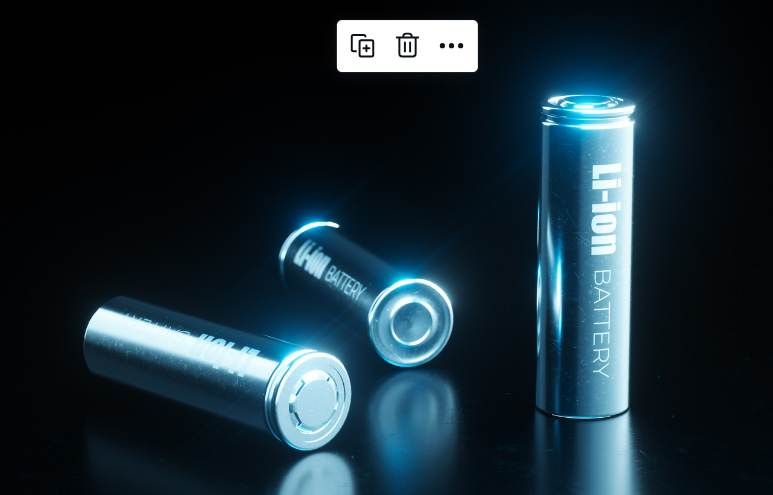Menu
Menu


Updated on Feb 2, 2024 | 6 min read
The origins of EV battery technology can be traced back to the early 19th century, with significant contributions from scientists like Michael Faraday. In 1821, Faraday’s pioneering work in electromagnetism laid the foundation for the development of permanent rotation, a crucial concept for electric mobility.
By the late 19th century, electric cars were technologically more advanced than their internal combustion engine counterparts. German entrepreneur and inventor Andreas Flocken introduced the first four-wheeled electric-powered vehicle in 1888, sparking rapid advancements in electromobility. During this period, electric vehicles enjoyed significant popularity, with their market share nearly double that of combustion engine vehicles.
However, despite these promising beginnings, the widespread adoption of electric cars could have been improved by various factors, including the influence of the automotive and oil industries and societal and political dynamics. This resulted in a prolonged period of stagnation for EVs, lasting almost a century.
Only in recent years, driven by growing environmental concerns, electric cars have experienced a resurgence. Today, renewable energies, battery storage systems, and e-mobility play crucial roles in achieving sustainability and environmental protection. While alternative propulsion options like hydrogen exist, scientific studies have shown that battery-electric drive offers higher efficiency and viability, making it the preferred choice for the foreseeable future.
Connect with 1C for expert advice on EV chargers
The 20th century witnessed a transformative evolution in electric vehicle (EV) batteries, driven by technological advancements, societal demands, and the growing need for sustainable energy solutions.
In the early 1900s, the automobile industry heavily relied on coal and oil for power. However, the environmental repercussions of fossil fuel dependence spurred a shift towards cleaner alternatives, igniting interest and investments in electric vehicles and their power source: batteries.
Lead-acid batteries dominated the scene in the early 20th century, prized for their cost-effectiveness. Despite structural enhancements, these batteries grappled with weight limitations, modest energy storage, and slow recharge rates, challenges that persist today.
The mid-century marked the rise of Nickel Cadmium (NiCd) batteries, aiming to surpass lead-acid counterparts. While NiCd batteries offered improved energy density and longer lifespans, their expensive manufacturing process and cadmium’s toxicity limited their adoption in electric vehicles.
Towards the century’s end, Nickel Metal Hydride (NiMH) batteries entered the stage, presenting substantial advancements in energy density and using less-toxic materials. The Chevy EV1, launched in the 1990s, prominently featured NiMH batteries. Despite progress, NiMH batteries faced hurdles like reduced performance in extreme temperatures and high production costs.

The advent of lithium-ion batteries represented a significant milestone in energy storage technology. Originating in the early 1990s, these batteries garnered attention for their innovative features and capabilities.
Lithium-ion batteries offered higher energy density than previous technologies, resulting in longer battery life and reduced weight. Notably, they resisted the “memory effect,” allowing for convenient recharging without requiring full discharge.
The introduction of lithium-ion batteries coincided with increasing demand for cleaner energy solutions, particularly in the automotive sector. Companies like Tesla embraced this technology, incorporating it into their electric vehicles to offer enhanced performance and range.
Tesla’s strategic approach and technological advancements were key in popularising lithium-ion batteries in the automotive industry. By sharing its technology through open patents, Tesla further accelerated the adoption of lithium-ion batteries, contributing to the growth of electric mobility.
Today, lithium-ion battery technology remains integral to EVs, driving advancements in performance and accessibility. Lithium-ion batteries continue to be a central component as the EV market expands, powering the transition towards cleaner and more sustainable transportation.
Connect with 1C for expert advice on EV chargers
In the 21st century, a notable development in electric vehicle (EV) technology is the emergence of solid-state batteries, representing a significant departure from traditional lithium-ion batteries. These next-generation batteries promise enhanced capabilities and performance standards akin to a transformative leap from analogue to digital technologies.
Solid-state batteries address key challenges conventional batteries face, such as energy density, charging times, and safety concerns. By replacing the liquid or gel electrolyte with a solid one, solid-state batteries achieve a notable increase in energy density, potentially doubling the range of EVs to 500 miles on a single charge. Additionally, they offer significantly shorter charging times, reduce hours to minutes, and boast improved safety by minimising the risk of leaks and fires associated with liquid electrolytes.
Despite these promising advancements, the implementation of solid-state batteries presents challenges. Cost remains a significant hurdle, as current production methods are expensive, resulting in prohibitively high prices for mainstream consumers. Furthermore, durability concerns persist, as solid-state batteries have yet to demonstrate long-term reliability without substantial degradation under extended usage.
Nevertheless, there is optimism surrounding the future of solid-state batteries. With ongoing research and investment from industry leaders like Toyota and Ford and innovative startups like QuantumScape, there is potential for rapid advancements and wider adoption of this groundbreaking technology in the EV market. As the 21st century continues to witness remarkable progress, the realisation of solid-state batteries as a mainstream feature in EVs may be close, ushering in a new era of sustainable and efficient electric transportation.
The landscape of electric vehicle batteries is poised for significant transformation in the coming decades, driven by innovation and environmental considerations. One promising contender in this evolution is solid-state technology, which holds the potential to revolutionize the EV battery market with greater energy density, quicker charging times, and enhanced safety features. Additionally, lithium-sulfur technology is gaining traction for its potential to offer significantly higher energy density, although challenges regarding cycle life and discharge rates remain. Looking ahead, future advancements may include wireless charging systems and the integration of supercapacitors to improve charging efficiency and lifespan. Collaboration among stakeholders, including carmakers, battery manufacturers, and governments, will be crucial in accelerating the development and scaling of these technologies. Moreover, increased emphasis on battery recycling initiatives is expected to play a vital role in mitigating environmental impact and reducing reliance on raw materials.
The evolution of electric vehicle batteries from early experiments to modern advancements reflects a shift towards cleaner transportation. Innovations in lithium-ion and solid-state technologies promise greater energy density and faster charging, driving widespread adoption of electric mobility. Collaboration and ongoing research will further propel the development of EV batteries, shaping a more sustainable future for transportation.
A Battery Electric Vehicle is a type of electric vehicle that is powered solely by an electric battery, without the use of an internal combustion engine. BEVs rely entirely on electricity stored in their batteries to propel the vehicle and do not produce tailpipe emissions.
The first electric vehicle is attributed to Scottish inventor Robert Anderson, who created a crude electric carriage powered by non-rechargeable primary cells in the early 19th century.
The first electric car to use a lithium-ion battery was the General Motors EV1, introduced in 1996. The EV1 featured advanced battery technology for its time, which allowed for improved range and performance compared to earlier electric vehicles.
© 2024 Massive Mobility Private Limited. All rights Reserved